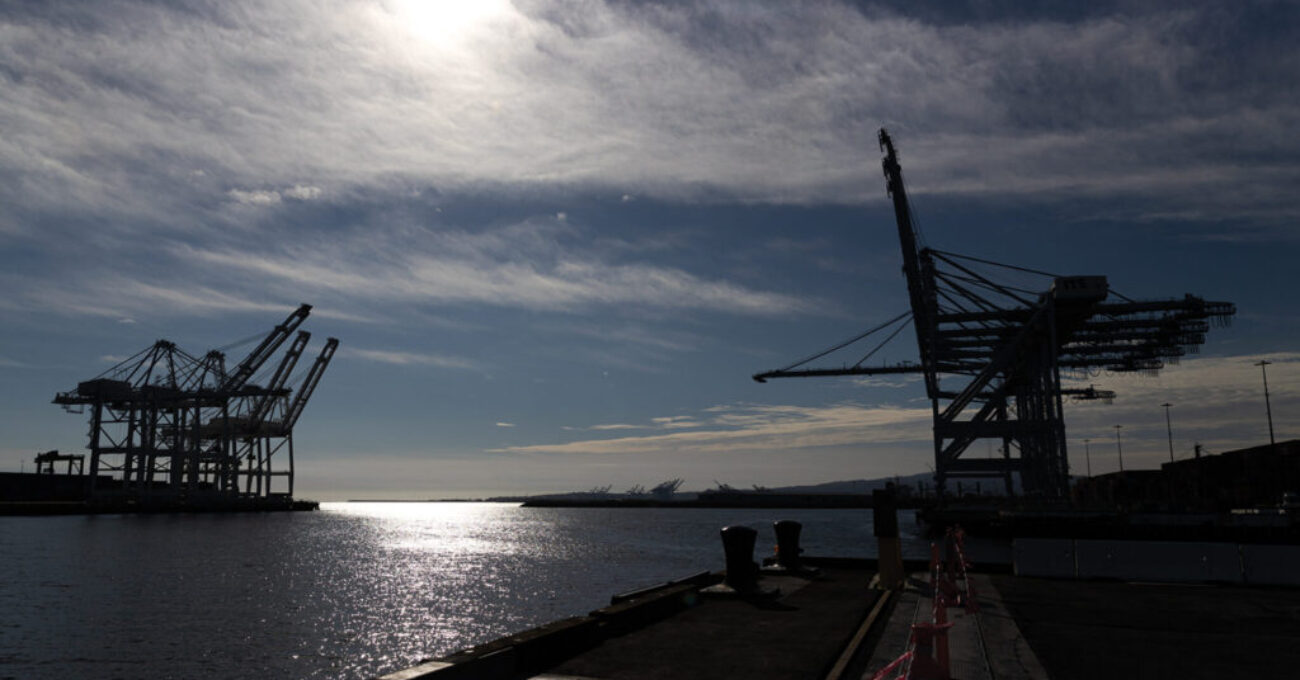Nearly all container terminals at the ports of Long Beach and Los Angeles are closed after union workers failed to show up to work, officials said.
The work stoppage comes in the midst of labor negotiations between one of the state’s most powerful unions, the International Longshore and Warehouse Union, and their employers, represented by the Pacific Maritime Association.
In LA, all seven container terminals were closed Friday, port officials said in an email to the Business Journal. In Long Beach, meanwhile, officials told the Business Journal four out of six terminals are closed, including International Transportation Service on Pier G, Pacific Container Terminal on Pier J, Long Beach Container Terminal on Pier E, and Total Terminals International on Pier T.
According to a statement Thursday from the Pacific Maritime Association, the International Longshore and Warehouse Union, Local 13, workers did not show up to shifts Thursday night.
“A majority of the jobs for last night’s shift went unfilled, including all jobs for cargo-handling equipment operators needed to load and unload cargo,” the statement reads. “The workers who did show up were released because there was not a full complement of ILWU members to operate the terminals.”
The PMA stated workers again did not show up for shifts this morning, effectively shutting down the ports.
As of 1:30 p.m. Friday, there were roughly 24 cargo vessels of varying size within the San Pedro Bay port complex, according to marinetraffic.com, which provides real-time tracking of all ship types.
According to statement from ILWU, longshore workers at the ports of Los Angeles and Long Beach remain committed to moving the nation’s cargo.
The union attributed the dockworker shortage to union members attending its monthly meeting and observing religious holidays.
“On the evening of Thursday, April 6, International Longshore and Warehouse Union Local 13 held its monthly membership meeting as it its contractual right,” the statement read.
At the meeting, outgoing President Ramon Ponce de Leon swore in incoming President Gary Herrera, with several thousand union members in attendance.
“On Friday, union members who observe religious holidays took the opportunity to celebrate with their families,” the ILWU statement read. “Cargo operations are ongoing as longshore workers at the ports remain on the job.”
Herrera told the Business Journal during a Friday afternoon call that workers are expected to be back at the terminals in full Friday night and through the weekend.
Other union officers did not immediately respond to calls for comment.
The ILWU, which represents 22,000 dockworkers up and down the West Coast, and PMA have been in contentious labor negotiations for 11 months. Early in the negotiations, the groups agreed to a media blackout during the talks. The groups also assured stakeholders that there would be no slow downs, work stoppages or strikes—promises that appear to no longer be in effect.
The contract expired in July of last year.
During a March 24 ceremony celebrating $110 million in funding for a supply chain worker training campus, Ponce de Leon, then ILWU president, boasted about the reliability of West Coast dockworkers, criticizing shippers for shifting cargo to East and Gulf coast ports.
Long Beach and Los Angeles, once the busiest ports in the nation, have been slipping in national rankings since fall of last year. Numerous times in 2022, the Port of New York and New Jersey moved more cargo than the twin ports, a feat that was all but unthinkable prior to the coronavirus pandemic.
New York-New Jersey closed out last year as the second-busiest container seaport in the country, beating out Long Beach for the first time. Los Angeles was able to hold onto the number one slot but that could change this year.
In February, New York-New Jersey moved more shipping containers than Long Beach or Los Angeles by a wide margin. The East Coast port moved 823,256 20-foot-equivalent units (the standard measure of a shipping container) compared to 543,675 TEUs in Long Beach and a dismal 487,846 TEUs in LA.
Year-to-date, New York-New Jersey has moved nearly 1.5 million TEUs to just over 1.2 million and 1.1 million in LA and Long Beach, respectively.
“We have been reliable from day one,” Ponce de Leon said during the event last month. “All you press out there, hear me out: This is reliable. The West Coast is moving cargo, bring it back over here.”
But Ponce de Leon’s words seem to be at odds with recent actions taken by union workers as negotiations drag on.
In mid-March, the PMA accused Local 13 of using lunch breaks to cause delays at the San Pedro Bay ports. Employers stated workers previously took staggered lunches as outlined in the now-expired labor agreement. For weeks now, however, workers have been taking their unpaid lunch breaks at the same time each shift, effectively halting operations for three hours every day.
Union officials have not confirmed or denied that workers purposely started taking their lunches together. They also have not responded to questions as to whether these two recent actions are related to ongoing negotiations or if they are precursors to a full-blown strike.
Port officials stated terminals are expected to reopen Saturday, but union leaders did not confirm that assertion.
“These actions undermine confidence in West Coast ports, and threaten to further accelerate the diversion of discretionary cargo to Atlantic and Gulf Coast ports,” the PMA statement reads. “The health of the Southern California and state economy depend on the ability of the Ports of Los Angeles and Long Beach to stem this market share erosion.”

